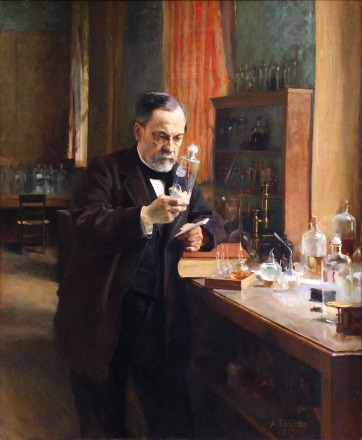Figure 1.1.

In 1881 and 1882, Louis Pasteur, Charles Chamberland, Émile Roux, and Louis Thuillier began their research toward developing a rabies vaccine. They modified Pierre-Victor Galtier’s technique by inoculating nervous tissue from a rabid dog through a long series of dogs via subdural trephination. After many passages, they obtained a virus of maximum virulence and with a fixed incubation period of about 10 days. The degree of attenuation of virus recovered from each passage was measured and virus was then further attenuated in rabbits. This final attenuation procedure consisted of suspending the spinal cord of a rabid rabbit in a flask, in a warm dry atmosphere, to achieve slow desiccation. They succeeded in producing “attenuated viruses of different strengths,” the weakest of which could be used to prepare the first dose of a vaccine. Inoculating dogs with a sequence of spinal cords of increasing virulence rendered the recipients resistant to inoculation with fully virulent virus. Within a year, Pasteur and his colleagues reported the results of this treatment in 350 cases of rabies exposure—only one person developed rabies, and this a child who was treated 6 days after exposure. Over the next decades many thousands of people with potential rabies exposures were immunized with ever-improving animal nervous system (brain and spinal cord) vaccines, at the Institut Pasteur in Paris, which was founded in 1888, and in other locations throughout the world.
Louis Pasteur, 1822–95. Painting by Albert Edelfeldt, 1885. From Institut Pasteur, used with permission.
